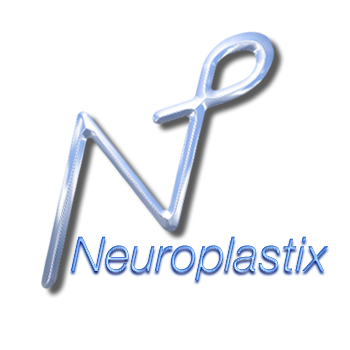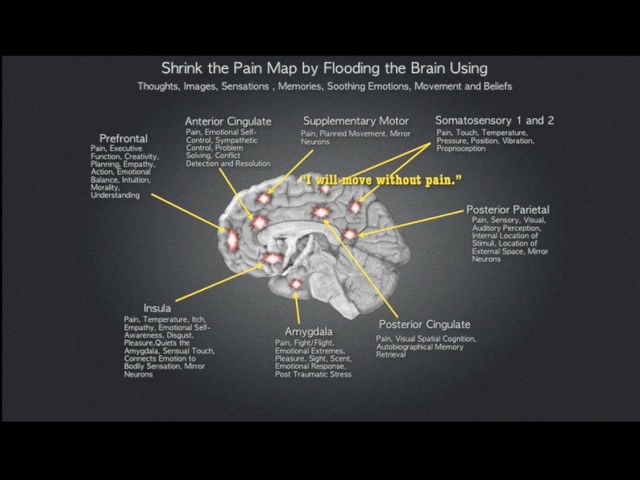Brain Access
We have more access to the brain than any other organ, even the skin. The brain uses the peripheral body to inform it of everything going on in the external world. It then directs the peripheral body to make adaptations to protect itself, survive and follow the Prime Directive: Avoid Pain; Pursue Pleasure. Every individual uses thoughts, images, sensations, memories, emotions, movement and beliefs to change their own brain. This brain access alters anatomic development, cellular structure, physiologic coordination, electrical circuitry, molecular activity, regional function and neuroplastic change. Everything we do, learn and master results in a change at all of these levels. This incredible access and sweeping change can be effectively used to end the tyranny of pain persistence.
The process of persistent pain is learned. Everything we can do is learned behavior. When we learn something our brains are changing. With each new thing we learn there is a transition from awkwardness to a smooth fluidity of function with lasting and surprising results. While we learn new things our brains are following all of the rules of neuroplasticity: Look at pages 6 and 7 of the Neuroplastic Transformation workbook and the changes that happen in the brain when we learn to read. This is something that we do repetitiously, without really knowing the whole new world that is about to open up for us. In persistent pain the brain uses this repetition to teach us pain. It is telling us that something is wrong, but the solutions it offers are worse than the problem. We have to consciously override the way things are usually done and take control.
To overcome persistent pain we cannot accept its inevitability. To do so would accommodate an “abnormal” normal. By using conscious access to the brain we can reclaim normal. We can teach our brain to stop pain’s persistence. The graphic on page 13 of the Neuroplastic Transformation workbook shows regional functions in the areas we perceive pain. By stimulating these other functions whenever pain spikes intrude upon consciousness, the pain signaling itself can be used to determine when to use thoughts, images, sensations, memories, soothing emotions, movement and beliefs to access and change the brain. This upends the current model of pain management to one of counter-stimulation, giving persistent pain no quarter, no acceptance.

